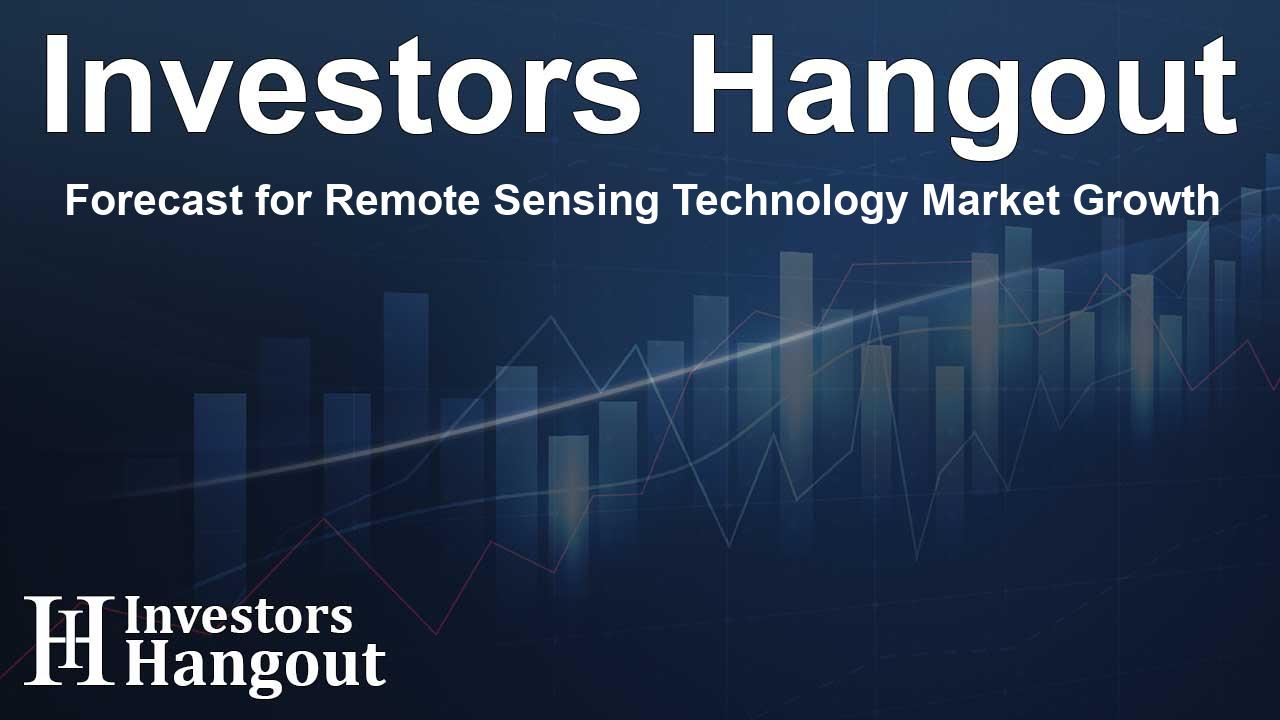Forecast for Remote Sensing Technology Market Growth

Remote Sensing Technology Market Size & Potential
Remote sensing technology has experienced significant growth, with the market size valued at USD 19.45 billion recently and projected to reach USD 51.04 billion by 2032. This development is accompanied by a notable compound annual growth rate (CAGR) of 11.32% during the forecast period of 2024 to 2032. Understanding the factors driving this market expansion is essential for stakeholders.
Drivers of Growth in Remote Sensing Technology
The surge in remote sensing technology usage across various sectors, including defense, environmental monitoring, and agriculture, fuels this market growth. Private and government organizations alike are increasingly adopting remote sensing techniques as they provide valuable data for enhanced decision-making.
Advancements in GEO spatial data generation through cutting-edge satellite and sensor technologies further support this trend. As these technologies evolve, they facilitate real-time analytics, substantially improving operational capabilities for industries worldwide.
Key Players in the Remote Sensing Market
The remote sensing technology market features several leading firms that significantly contribute to its growth. Companies such as Maxar Technologies, Esri, and General Dynamics Mission Systems are at the forefront, providing innovative solutions and services that expand the technology's applications.
Innovative Solutions from Market Leaders
Maxar Technologies focuses on earth imaging and satellite services, while Esri specializes in geospatial software and GIS solutions. General Dynamics Mission Systems plays a crucial role in military communication systems and remote sensing systems, further enhancing defense capabilities through advanced technologies.
Market Segmentation Insights
Understanding how the market segments are broken down can provide further insights into its dynamics. The technology segment is primarily divided into active sensing and passive sensing. In 2023, passive sensing dominated the market, accounting for approximately 60% of total revenue.
Passive vs. Active Sensing Technology
Passive sensing is widely utilized in satellite imaging as it captures naturally occurring energy, such as sunlight, to gather data. This approach is recognized for its cost-effectiveness and broad applicability across various industries, particularly agriculture and environmental monitoring.
On the other hand, the active sensing segment is anticipated to experience the fastest growth from 2024 to 2032 due to advancements in radar and LiDAR technologies. Unlike passive systems, active sensors generate their own signals, leading to precise data collection even in challenging conditions.
Platform-Based Growth Dynamics
Analyzing the platforms used in remote sensing technology reveals that aerial systems currently lead the market, contributing around 70% to total revenue. Drones and UAVs are pivotal in this growth, offering advantages like high-resolution imaging and the ability to access hard-to-reach areas.
The Role of Satellite Technology
While aerial systems dominate, the satellite segment is anticipated to be the fastest-growing segment, reflecting increasing demand for high-resolution imagery. The pivotal role of satellite-based remote sensing in agriculture, climate studies, and disaster management underlines the importance of continued advancements in this area.
Regional Market Dynamics
In 2023, North America held the largest share of the remote sensing technology market, approximately 50%. This is largely due to substantial investments in space and defense technologies and advanced satellite systems. The region's dedication to research and innovation only strengthens its market position.
Conversely, the Asia Pacific region emerges as the fastest-growing market driven by increasing industrialization and rising investments in space technology. Countries in this region are prioritizing environmental sustainability, resulting in a growing adoption of remote sensing technologies.
Frequently Asked Questions
What is the expected growth rate of the remote sensing technology market?
The remote sensing technology market is projected to grow at a CAGR of 11.32% from 2024 to 2032.
Which companies are leading the remote sensing technology market?
Key players include Maxar Technologies, Esri, General Dynamics Mission Systems, and others, contributing significantly to market growth.
What are the main segments of the remote sensing technology market?
The market is primarily segmented by technology (active and passive sensing), platform (satellite and aerial systems), and application (agriculture, military intelligence, etc.).
What drives the growth in the remote sensing technology market?
Key drivers include advancements in satellite technologies, an increasing need for real-time data, and growing applications across industries.
Which region currently leads the remote sensing technology market?
North America currently leads the market, while Asia Pacific is anticipated to be the fastest-growing region due to rapid technological advancements and industrial growth.
About The Author
Contact Dominic Sanders privately here. Or send an email with ATTN: Dominic Sanders as the subject to contact@investorshangout.com.
About Investors Hangout
Investors Hangout is a leading online stock forum for financial discussion and learning, offering a wide range of free tools and resources. It draws in traders of all levels, who exchange market knowledge, investigate trading tactics, and keep an eye on industry developments in real time. Featuring financial articles, stock message boards, quotes, charts, company profiles, and live news updates. Through cooperative learning and a wealth of informational resources, it helps users from novices creating their first portfolios to experts honing their techniques. Join Investors Hangout today: https://investorshangout.com/
The content of this article is based on factual, publicly available information and does not represent legal, financial, or investment advice. Investors Hangout does not offer financial advice, and the author is not a licensed financial advisor. Consult a qualified advisor before making any financial or investment decisions based on this article. This article should not be considered advice to purchase, sell, or hold any securities or other investments. If any of the material provided here is inaccurate, please contact us for corrections.
